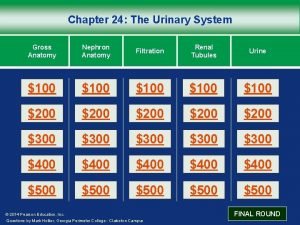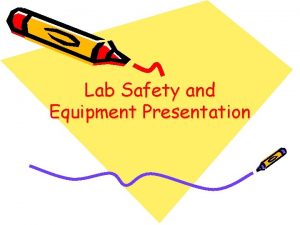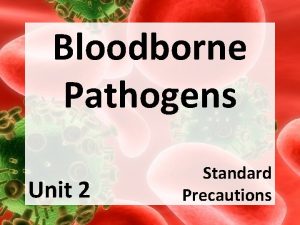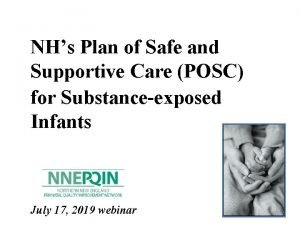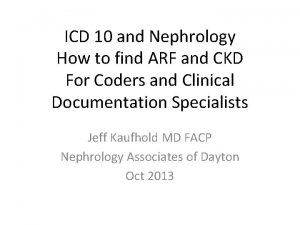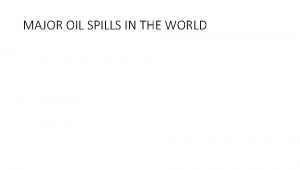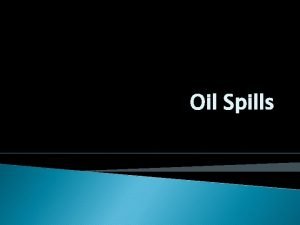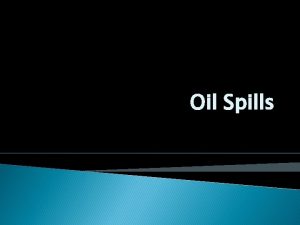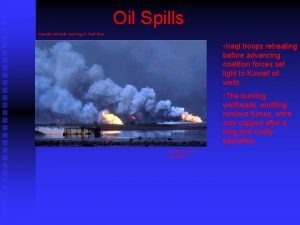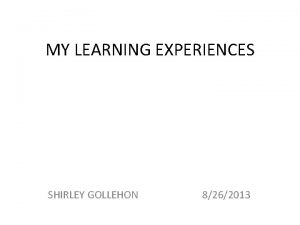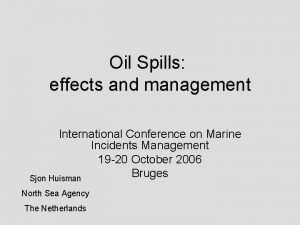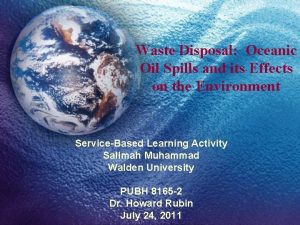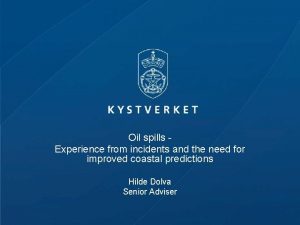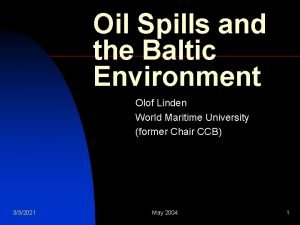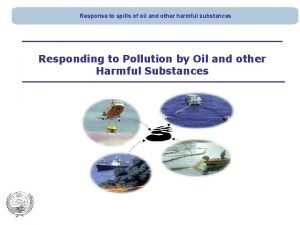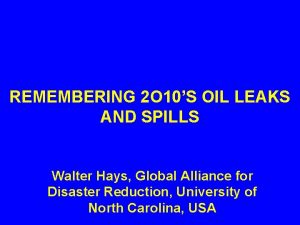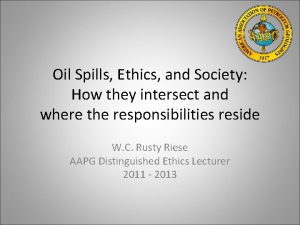Oil Spills Jen Gollehon and Lindsey Poage Introduction













- Slides: 13

Oil Spills Jen Gollehon and Lindsey Poage

Introduction n n Increasing economic development has caused an increase in marine transportation of crude oils and offshore production. First major oil spills: – 1967, “Torrey Canyon” tanker grounded, releasing 117, 000 tons of oil – 1969, blow-out of offshore platform “Santa Barbara” released 13, 600 tons of oil Need for international legislation and control of transportation and offshore production Increase in research of marine environments, oil and its affects, methods of clean-up, and prevention.

Types of Oil n n Crude oils: mixtures of hydrocarbons of varying molecular weights and structures Refined oils: products of distillation of crude oil – includes kerosene, diesel oil, jet fuel, and lubricating oils

Characteristics of Oils Affect the behaviour of oil on water and thus efficiency of clean up Will vary depending on environmental conditions n n n Specific gravity Surface Tension Viscosity Flash Point Solubility

Behaviour of Oil n n n n n Spreading and drifting of oil caused by waves Evaporation Dissolution Dispersion of oil droplets Photochemical oxidation Microbial degradation Absorption onto suspended particulate matter Ingestion by organisms Sinking and sedimentation

Input of Oil into Marine Environment (estimated million tons per year)

Significant Spill Causes Weather Engine Troubles Fire Explosion Oil Transfer Groundings Contacts Collisions

Levels of Biological Effects n n n Human hazards through eating contaminated seafood decrease of fisheries resources and damage to wildlife decrease of aesthetic values due to unsightly slicks and oiled beaches modification of marine ecosystems by elimination of certain species with an initial decrease in diversity and productivity modification of habitats, delaying or preventing recolonisation

Affects on Marine Environments n n Fish and Crustaceans – may have oily odor or flavor, becoming unfit for human consumption – hydrocarbons accumulate in muscle tissue – formation of tumors – resistant and opportunistic species increase Mammals – oil adheres to fur, affecting swimming ability and blocks body orifices, loss of body temp. – irritates skin and sensitive membranes – ingestion and inhalation of oil

n n n Sea Birds – water proofing and insulation of plumage is destroyed – inability to fly and/or float in water – difficulty obtaining food and escaping predators – irritation of eyes – susceptible to bacterial and fungal infections Coral Reefs – death of fish and invertebrates including lobsters, crabs, gastropods, bivalves, octopus, sea urchins, sea stars, and sea cucumbers. – Becomes barren of sessile invertebrates and algae Shore – beaches are covered in an oil slime – oil is buried in the sedimentation of the beach – amount of oil on the shore depends on the wave actions

Chemical Response n n n Natural Cleansing – Biodegradation – Enhanced Biodegradation Chemical Barriers Sinking Agents Sorbents Chemical Dispersants Burning

Mechanical Response · · · Mechanical containment only work when oil is floating on the water surface Booms Pneumatic Barriers Trawling High Pressure Water Jets Hydraulic Dispersion

Clean-Up n In Water – Weir Skimmer – Sorbent Surface Skimmers – Suction Devices – Centrifugal Devices – Submersion Devices n On Shore – – Sand Removal Manual Clean-up Sea Water Flushing Sieving Sand


